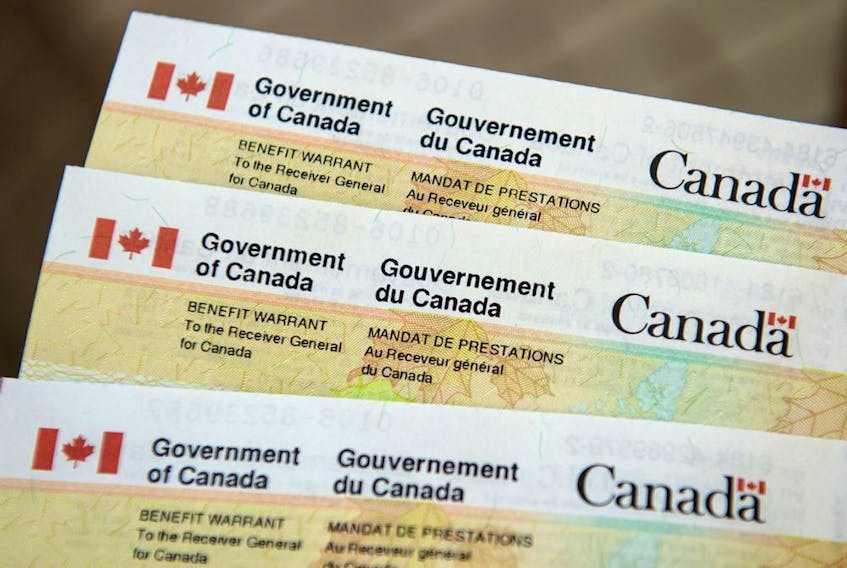Earlier this week, the government began accepting applications for its newest program, the Canada Recovery Benefit (CRB) for self-employed workers and workers not eligible for Employment Insurance. This is in addition to the other two new benefits, the Canada Recovery Caregiving Benefit (CRCB) for individuals unable to work because of the need to provide care or support for a child, family member or dependent, and the Canada Recovery Sickness Benefit (CRSB) for workers who are unable to work because they are sick or must self-isolate. As of mid-week, the Canada Revenue Agency has received over 497,000 applications for the CRB, 157,800 applications for the CRCB, and over 86,000 applications for the CRSB.
Given that the CRB is likely to be the primary benefit available to self-employed and other workers not eligible for EI, let’s take a deep dive into who is eligible, the mechanics of applying, and the tax consequences of receiving the CRB.
What is the CRB?
The CRB was designed to replace the Canada Emergency Response Benefit (CERB) for employees who don’t qualify for EI and for those who are self-employed. As of Oct. 4, the government has paid out some $81.64 billion in CERB to over 8.9 million unique Canadian applicants. The CRB runs from Sept. 27 for one year and provides $500 per week, for up to 26 weeks, to eligible applicants.
Who is eligible?
The CRB is available to eligible individuals who are at least 15 years old and have a valid SIN, have stopped working due to COVID-19 and are available and looking for work, or are working but have experienced a reduction in their (self-)employment income, for reasons related to COVID-19.
You don’t have to be a Canadian citizen or a permanent resident in order to receive the CRB provided you reside (and are present) in Canada during the period for which you’re claiming the benefits (and meet the other eligibility criteria.) Canadian citizens living abroad temporarily cannot collect, even if they remain abroad because they couldn’t get home once the pandemic started.
Similar to the CERB requirements, to be eligible, the individual must not qualify for EI, must not have quit their job voluntarily, and must have had (self-) employment income of at least $5,000 in 2019 or 2020 or in the 12-month period preceding the day on which they make their first application for this benefit. The $5,000 must have been from either (self-) employment income, EI maternity or parental benefits or Quebec Parental Insurance Plan benefits.
Unlike the CERB, the CRB periods are retroactive. This means that applicants can only apply for a CRB after the period for which they’re applying has ended, which is designed to allow an applicant to attest to the fact that they were unable to work for the time for which they are claiming the CRB. This is consistent with how EI benefits are administered and is meant to ensure that applicants are getting the benefits for a period for which they are entitled, thus avoiding the need to repay benefits already received if they were to apply in advance, but then were able to work.
Note that an applicant can’t turn down “reasonable work” during the two-week period for which they’re applying or they risk automatically losing five periods (ten weeks) of future CRB eligibility periods. They must also wait five periods (ten weeks) before reapplying.
Applicants must apply within 60 days after the period for which they are applying has ended. For example, if you couldn’t work due to COVID-19 for the two-week period between Sept. 27 and Oct. 10, 2020, you can apply for this two-week period until Dec. 9, 2020.
The best way to apply for any of the recovery benefits is online, using the CRA’s My Account . Canadians without Internet access can apply using the CRA’s automated bilingual toll-free phone lines.
As with the EI system, to encourage CRB recipients to accept work while collecting benefits, recipients can still earn income from (self-)employment while receiving the benefit, as long as they continue to meet the other requirements. To ensure that the benefit targets those who need it most, however, recipients would need to repay $0.50 of the benefit for each dollar of their annual net income above $38,000 in the calendar year, up to the amount of CRB they received.
What constitutes a ‘reduction in income’?
To be eligible for CRB while still working, you must have suffered a “reduction in average weekly income of at least 50 per cent relative to pre-pandemic levels.” According to the CRA, a loss of income is defined as a reduction in total average (self-)employment income for the two-week benefit period compared to your average (self-)employment income for a two-week period the previous year.
To calculate your reduction in average income, you either take your annual net income for 2019 or the 12-month period prior to your application and divide it by 26 to determine your average earnings for a two-week period.
For example, Rob is a self-employed musician who had net income of $39,000 in 2019. To determine his average earnings for a two-week period prior to the pandemic, Rob divides this amount by 26, which equals $1,500. Because Rob’s paid gigs have dropped dramatically since COVID-19 hit, he’s currently earning only $700 every two weeks, mostly from giving music lessons. Since he’s suffered an income reduction of more than 50 per cent, he’s eligible to claim the CRB.
How is the CRB taxed?
Like the CERB, the new CRB is taxable, but, unlike the CERB, the government is withholding a flat 10 per cent tax at source from each CRB payment. This means that some of the $500 benefit amount will be withheld by the CRA before you get your payment, and will be credited against any income tax you need to pay for the year. The amount of tax you will actually owe, however, will depend on your total income for the year as the CRB will simply be added on top of your other income and taxed your marginal tax rate.
As for the clawback of the CRB, recipients will be required to repay $0.50 of the CRB back for every dollar in net income earned above $38,000 (excluding the CRB itself) up to a maximum repayment of the CRB received in the year. Amounts repaid are not included in your taxable income. This calculation will be reconciled when you file your 2020 tax return next spring and the repayment will be incorporated in your total payable (or reduce any tax refund).
Jamie Golombek, CPA, CA, CFP, CLU, TEP is the Managing Director, Tax & Estate Planning with CIBC Private Wealth Management in Toronto.
Copyright Postmedia Network Inc., 2020








